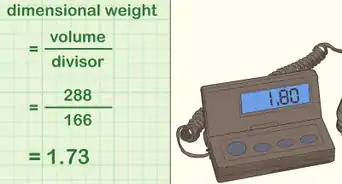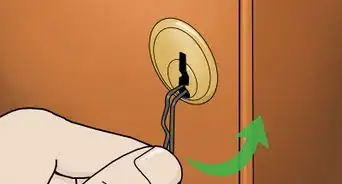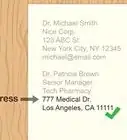This article was co-authored by wikiHow staff writer, Hannah Madden. Hannah Madden is a writer, editor, and artist currently living in Portland, Oregon. In 2018, she graduated from Portland State University with a B.S. in Environmental Studies. Hannah enjoys writing articles about conservation, sustainability, and eco-friendly products. When she isn’t writing, you can find Hannah working on hand embroidery projects and listening to music.
There are 7 references cited in this article, which can be found at the bottom of the page.
This article has been viewed 9,235 times.
Learn more...
With the prevalence of electronic devices on the rise, shipping them to faraway places has become more and more popular. But how do you pack and ship electronics to make sure they arrive safely? Luckily, our guide will walk you through the steps of protecting your devices so you can safely your electronics with a courier.
Steps
Protecting Your Electronic Device
-
1Ship your device in the original packaging if you can. If you want to ship a new electronic device, avoid taking it out of the box it came in. If you want to set up your new device before shipping it, try to pack it back up the same way the manufacturer had it to make it easier on yourself.
- Since the device had to be shipped before it got to you, it will already be packed up safely.
-
2Turn off the electronic device by pressing the power button. Conserve the battery of the device by turning it completely off before you ship it. Do not remove the batteries from the device if they are already in there.
Tip: Most courier services will ship your device domestically or internationally even if it contains a lithium battery.[1]
Advertisement -
3Cover the power buttons with cardboard or tape. If you are shipping an electronic device that isn’t in a box, use a small piece of cardboard or some masking tape to cover the power buttons so that they don’t get pressed during transit. Check for multiple power buttons just in case.
-
4Place the device in a plastic bag. Put your device in a small plastic bag that can be sealed. Push out all the air from the bag before you seal it to avoid air pockets.
- Plastic bags help to remove the threat of static electricity.
- If your device is in a box, you don’t need to put it in a bag.
Packing up Your Device
-
1Wrap your item in a few layers of bubble wrap. Lay out a sheet of bubble wrap and set your item on it. Wrap up your item securely in at least 2 layers of bubble wrap and secure the ends with tape.[2]
- If you are shipping more than 1 electronic device in 1 box, wrap each of them separately in bubble wrap.
- If you are shipping a new device in its box, wrap the entire box in a few layers of bubble wrap.
-
2Put your item into a specialty box if your courier provides one. Many courier companies provide specific boxes to fit the shape and size of electronic devices. Phones, tablets, laptops, and computers all have different boxes that you can use to ship them. Check with your courier service to see if you can pick up a box made for your device.[3]
- Most courier services provide specialty boxes for free. Check their website or go to one of their locations to pick one up.
Tip: If your courier doesn’t have specialty boxes, choose a box that is about 6 inches (15 cm) larger than the size of your device.
-
3Fill the empty space around your item with bubble wrap. Fold small pieces of bubble wrap so that they fit inside of the box. Layer the bubble wrap around the item until it's packed snugly in the box. You should be able to shake the closed box without hearing your device rattle around.
- You can also use newspaper to pack your box by balling up small pieces.
- Avoid using packing peanuts to prevent static electricity.
-
4Seal your box with packing tape. Fold down the corners of the box and tape them shut with sturdy packing tape. Tape up each seam on the top, bottom, and sides of the box. Make sure there are no loose ends on your box that could get caught during shipment.[4]
- You can buy packing tape at most home goods stores or courier locations.
- Packing tape is the only tape strong enough to securely hold your box closed as it is shipped.
Shipping Your Electronics
-
1Take your package to the courier to get it weighed. The price of your shipment depends on how large your package is. Bring your package in to your local courier and have them weigh it to prepare it for shipment.[5]
- If you already have a shipping label from an online selling service, you don’t need to weigh your package.
Tip: Most courier services won’t accept packages that weigh more than 150 pounds (68 kg).
-
2Tell the courier to print out a shipping label for you. Tell the courier service where your device is going and what address it should be shipped to. Double check that both the shipping address and your return address is correct before they print out the label.[6]
- If your package is going to a PO box or an apartment, make sure to include that in your shipping label by writing “PO box” or “Apartment # 3.”
-
3Attach the shipping label to the outside of your box. Use clear tape to secure your shipping label to the top of your box. Make sure your return address is printed clearly and any barcodes face up.[7]
- Some shipping labels are just stickers, in which case you don’t need to use tape.
-
4Ask for a tracking number to track your package. Ask for your receipt with a tracking number included and then use that number on the courier’s website to see where your package is and when it gets delivered. Most courier services will ask if you’d like a tracking number automatically, especially for electronics.[8]
- You can plug in your tracking number online to see where your package is at any given time.
- You do not need to pay for a tracking number at most courier services.
- If the price of your electronic device is over $100, you can usually purchase insurance from your courier service to get the cost of your device covered if it gets lost or damaged. The rates for insurance vary, but are usually around $0.90 for every extra $100 of value.[9]
Warnings
- Always make sure your device is packed up securely to avoid damage.⧼thumbs_response⧽
Things You'll Need
- Bubble wrap
- Packing tape
- Cardboard box
References
- ↑ https://faq.usps.com/s/article/Can-I-Ship-Lithium-Batteries
- ↑ https://www.youtube.com/watch?v=HzIPJcbipFY&feature=youtu.be&t=192
- ↑ https://www.fedex.com/en-us/how-to/ship-electronics-car-parts.html
- ↑ https://www.fedex.com/en-us/how-to/ship-electronics-car-parts.html
- ↑ https://www.ups.com/us/en/help-center/packaging-and-supplies/prepare-overize.page
- ↑ https://www.fedex.com/en-us/service-guide/labels-documentation.html
- ↑ https://www.fedex.com/en-us/service-guide/labels-documentation.html
- ↑ https://tools.usps.com/go/TrackConfirmAction_input
- ↑ https://www.ups.com/assets/resources/media/en_US/retail_rates.pdf#page=114

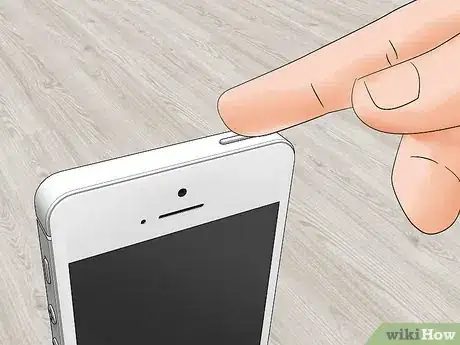




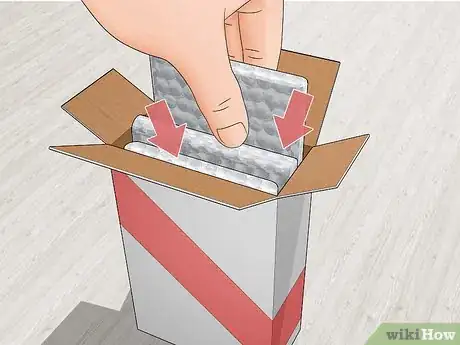









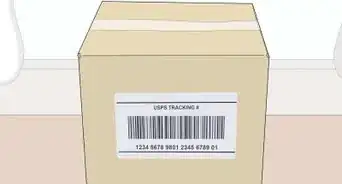
-Step-12-Version-2.webp)



